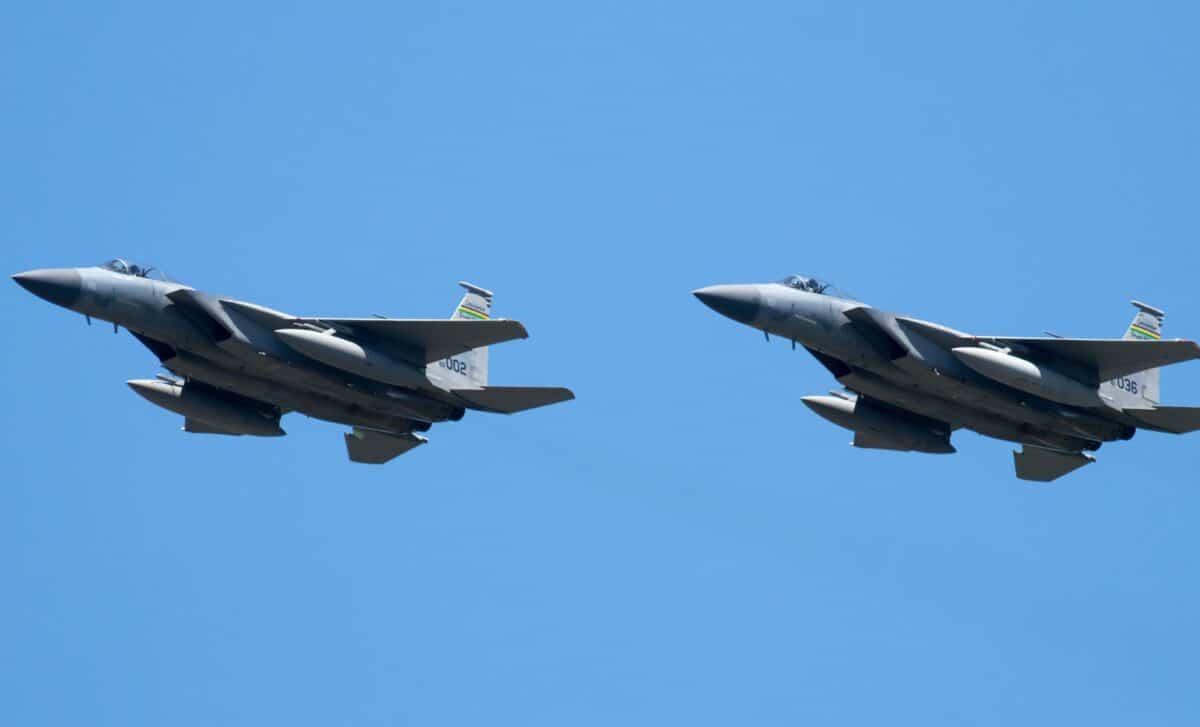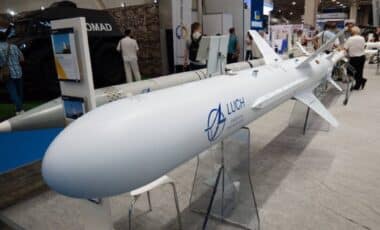The U.S. Department of Defense has announced a $3.1 billion investment to continue production of the F-15EX Eagle II multirole fighter jet. This funding will support the acquisition of 21 additional aircraft, reinforcing both the U.S. Air Force’s capabilities and the industrial output of Boeing Defense.
Presented as part of the Fiscal Year 2026 defense budget, the move underscores a strategic focus on maintaining air superiority while ensuring manufacturing continuity. The F-15EX, developed from the legacy F-15 platform, is designed to complement stealth aircraft and serve across a range of combat environments.
According to the U.S. Department of Defense, the proposal was formally revealed on June 26, 2025, during a budget briefing at the Pentagon. With a total defense budget of $1.01 trillion, the plan allocates substantial funding to modernize tactical airpower. The procurement of the F-15EX supports the Air Force’s intent to replace the aging fleet of F-15C/D models while strengthening operational readiness. The production effort also contributes to sustaining Boeing’s facilities in St. Louis, Missouri, where the aircraft is manufactured.
Launched in July 2020 with an initial eight-aircraft order and a ceiling of $23 billion for up to 144 units, the F-15EX program has since adjusted its target to a total of 104 aircraft. As reported by Army Recognition, nine aircraft had been delivered as of mid-2025, including one from Lot 2, assigned to the Oregon Air National Guard.
The U.S. Will Spend More on Defense in 2025 Than the Next 10 Countries Combined
Enhanced Design Rooted in a Proven Platform
The F-15EX is a significantly modernized version of the traditional F-15, equipped with cutting-edge technology. It incorporates the AN/APG-82 AESA radar, EPAWSS (Eagle Passive Active Warning Survivability System), digital cockpit interfaces, and an open mission systems architecture designed for future upgrades. The aircraft maintains the F-15’s airframe while introducing fly-by-wire controls, enabling improved maneuverability and adaptability.
Its payload capacity remains a standout feature, capable of carrying up to 22 air-to-air missiles or a variety of precision-guided munitions. Among these are advanced systems such as the AGM-183A ARRW hypersonic weapon, placing the aircraft at the forefront of long-range and high-impact missions. The configuration supports both homeland defense operations and contested international environments.
Operational Deployment and Delivery Status
As of July 2025, the U.S. Air Force had received nine F-15EX aircraft. The initial deliveries from production Lots 1A and 1B were allocated to Eglin Air Force Base, Florida, for developmental testing and to the 142nd Wing of the Oregon Air National Guard for operational deployment. The first aircraft from Lot 2 has also been delivered to Portland, with additional units expected under the FY2026 order.
These deployments reflect the Air Force’s aim to integrate the platform quickly into active units while testing its performance in diverse scenarios. The program’s timeline supports continued delivery through Boeing’s established manufacturing cycle, keeping pace with projected defense requirements.
Strategic Value in Multi-Domain Operations
The F-15EX is positioned as a critical asset in multi-domain combat operations. With twin F110-GE-129 engines, the aircraft offers high thrust and extended operational range, enabling deep-strike missions and long-endurance patrols. It is also designed for secure communications and integration into network-centric warfare environments, acting as a strategic node within U.S. air combat systems.
According to the U.S. Department of Defense, the aircraft’s combination of advanced systems and proven reliability is intended to bridge the gap between legacy fighters and the next generation of combat aircraft. Its role in ensuring air superiority while maintaining cost-effective sustainment highlights its significance within the broader defense strategy.








